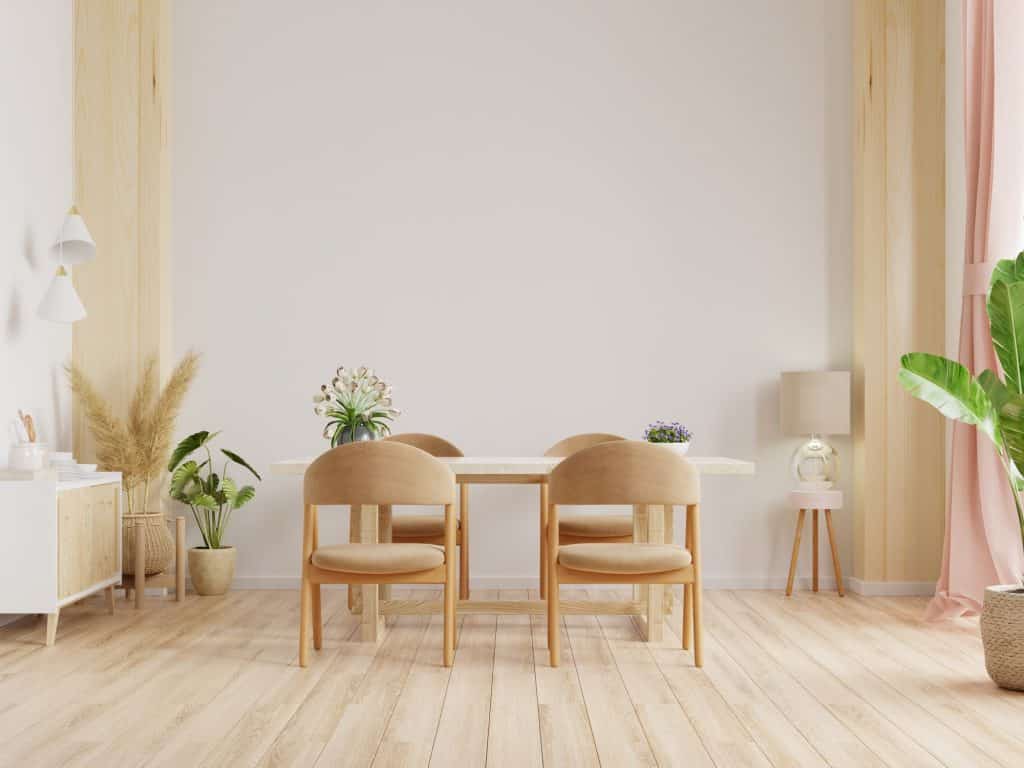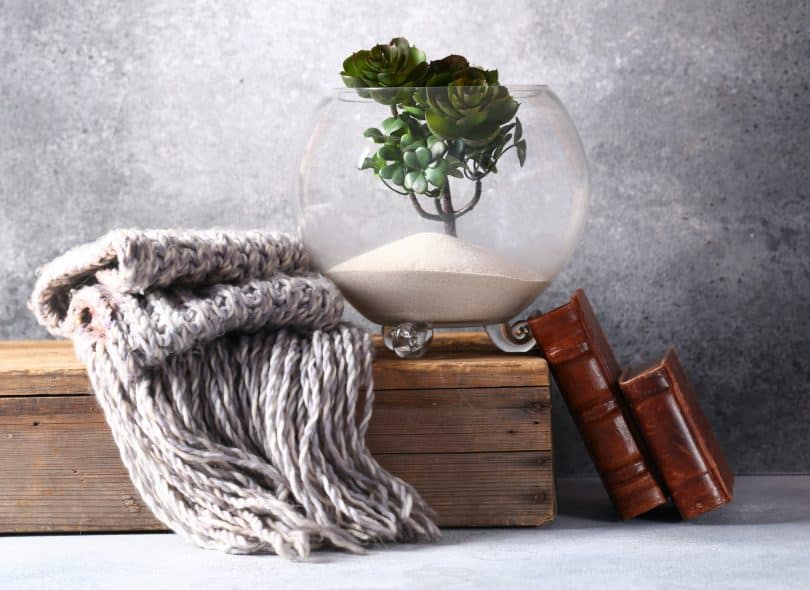Like many other industries, there’s been a shift in recent years towards sustainability in interior design. Luckily, this is incredibly easy to achieve and often hides behind terms such as “upcycling” or “vintage”.
So, if you’re interested in sustainable interior design, here are some tips on how to minimize your project’s impact on the planet.
What is Sustainable Interior Design?
We can define sustainable interior design as creating an environment that favors function, appearance, and accessibility with a focus on the planet. Specifically, it’ll use materials and design principles that reduce pollution, waste, and energy consumption.
There are plenty of ways we can approach sustainability in interior design, ranging from the room’s construction to furniture materials and lighting choices.
Of course, something like insulation doesn’t come under the interior designer’s job description. But, if you’re running a design project and are really interested in eco-friendliness, consider checking the room’s energy efficiency rating before starting.
There are easy ways to improve it with some simple design changes.
The Benefits of Sustainable Interior Design
Another term we can use is “conscious consumption”, which is perhaps more accurate for design projects. After all, we need to consume resources to design and decorate a space, so we might as well do this consciously.
What are the benefits of conscious consumption in interior design?
Less waste
Done properly, it’s possible to drastically minimize the waste produced during an interior design project. Choosing renewable materials is the most obvious step, but you should also be with how and where you use materials.
Less energy consumption
This doesn’t necessarily apply to the project itself, but more to the room once it’s done. Using insulated curtains, favoring natural light, and intelligent floor dressing can reduce heating and electricity bills, and therefore energy consumption.
Creates a healthy environment
Sustainable interior design means using natural products, which can help to improve indoor air quality. Volatile organic compounds can be a problem in our homes, and choosing natural materials helps to reduce this issue.

Tips for Sustainable Design
So, how do we carry out an interior design project with sustainability in mind? With a bit of planning, it’s not that difficult. Here are some tips on how to design a room sustainably.
1. Know your materials
There are plenty of sustainable materials on the market. Some are better than others, but knowing the specific pros and cons of each one is helpful when designing a space.
For furniture, you can’t go too wrong with:
- Bamboo
- Cork
- Wood
- Ceramic
For textiles, the best options are:
- Bamboo
- Linen
- Organic cotton
- Hemp
Finally, for rugs, mats, and accessories, things like coir, jute, seagrass, etc. are perfect.
As you can see, sustainable materials are natural and renewable. Bamboo is one of the world’s most sustainable crops; it can grow up to 4ft in a day! It’s also easy to turn it into pretty much anything.
2. Think long term
While IKEA flat-pack furniture is convenient, it’s not built for the long term. Solid wood (or bamboo) furniture is durable and long-lasting.
For elements that’ll last, think heavy duty. This is true for flooring and furniture. If you’re concerned about a piece’s style, seek out innovative, customizable, modular solutions that can adapt to your changing aesthetics.
Sure, solid furniture is more expensive but it’s worth the investment.
3. Be smart with paint
We might have moved away from the days of lead-based paint, but that doesn’t mean all paints are sustainable. Paint can have a major environmental impact during production and after use.
Look for paints with minimal environmental impact. While they’ll never be sustainable, it’s a step in the right direction.
- Find paints labeled ultra-low or zero VOCs.
- Non-toxic is another label to look for – ensure it’s free from acrylic, formaldehyde, and oils.
- The Greenseal label is a mark of sustainability.
- Always buy water-based paints.
- Take leftover paint to a recycling or disposal center.
4. Opt for upcycling
Upcycling is sustainability with a trendy name. Some careful thrift store shopping can turn up some gems for furniture, art, and accessories. Granted, you never know what you’ll get, but that’s part of the fun.
Approach it with a rough idea of what you need based on the room’s mood board. You can completely transform a tired piece of furniture with some paint, new upholstery, or a bit of decoupage.
What’s more, good vintage pieces are more likely to be solid furniture. This fits in with tip 2 and is a great way to save money.
5. Think energy consumption with every decision
Energy efficiency is a big part of sustainability and falls under the interior designer’s functionality principle. The most obvious aspects are lighting and curtains, but you can go further.
First, opt for efficient light bulbs and intelligent placement. If you can light a room with one or two lamps, choose that over multiple overhead lights.
Window dressings should be insulated. But, they should allow for maximum natural light during the day too.
Finally, flooring is perfect for regulating a room’s temperature. Cork is great for colder environments, while tile, concrete, and hardwood are better for warm places. Done properly, a tile floor can suck all the heat from a room, cooling it massively.
6. Be as timeless as possible
Interior design goes through constant trends. But, this doesn’t align too well with a sustainability model. So, when designing a space, try to be as timeless as possible.
This doesn’t mean everything must be neutral colors and sparsely furnished. You can still have a bold-colored room that remains timeless. Colors such as dark greens, navy blues, and beiges seem to remain in fashion.
Similarly, opt for timeless patterns such as stripes, botanicals, and plaids. This will allow you to keep the design for years to come while still having a well-designed space.
Conclusion
Sustainable interior design involves being clever with your choices and thinking about the larger impact. It’s about taking a holistic approach to the space and considering how elements work in relation to one another.
By following these tips, you’ll easily create an interior that’s both fashionable and sustainable!







